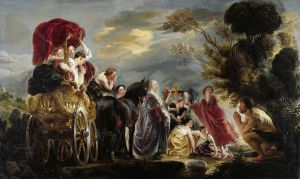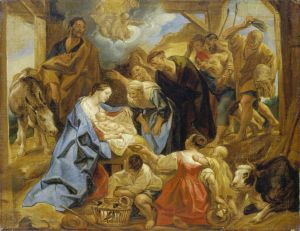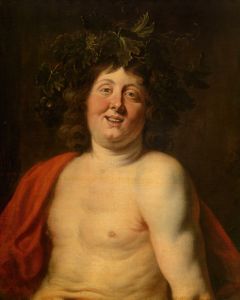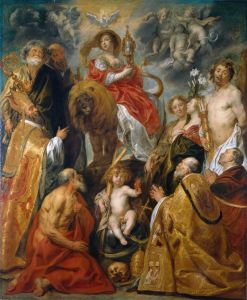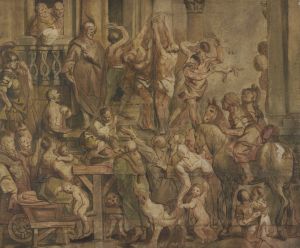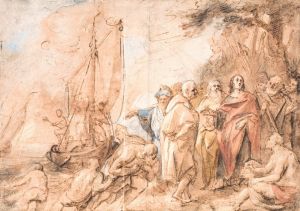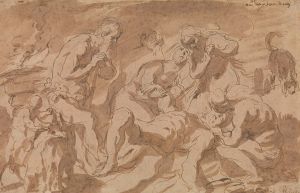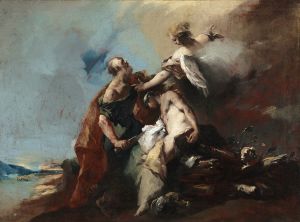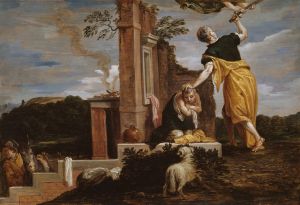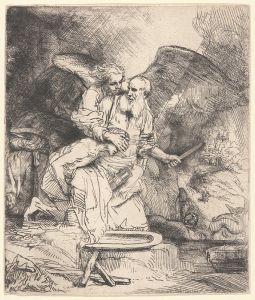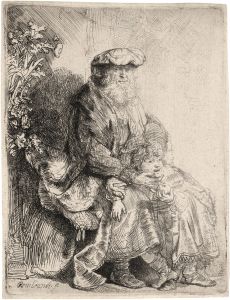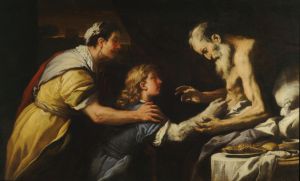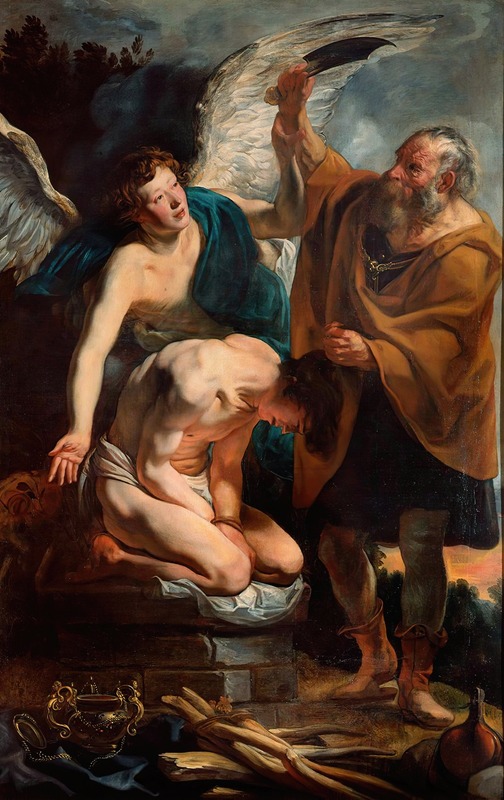
The Sacrifice of Isaac
A hand-painted replica of Jacob Jordaens’s masterpiece The Sacrifice of Isaac, meticulously crafted by professional artists to capture the true essence of the original. Each piece is created with museum-quality canvas and rare mineral pigments, carefully painted by experienced artists with delicate brushstrokes and rich, layered colors to perfectly recreate the texture of the original artwork. Unlike machine-printed reproductions, this hand-painted version brings the painting to life, infused with the artist’s emotions and skill in every stroke. Whether for personal collection or home decoration, it instantly elevates the artistic atmosphere of any space.
Jacob Jordaens' The Sacrifice of Isaac is a Baroque painting created by the Flemish artist Jacob Jordaens (1593–1678), who was one of the leading painters of the Antwerp School during the 17th century. Known for his dynamic compositions, vibrant use of color, and dramatic lighting, Jordaens was heavily influenced by the works of Peter Paul Rubens, with whom he shared a similar artistic style.
The painting depicts the biblical story of the near-sacrifice of Isaac by his father, Abraham, as recounted in the Book of Genesis (22:1–19). In this narrative, God commands Abraham to sacrifice his son Isaac as a test of faith. At the last moment, an angel intervenes, stopping Abraham and providing a ram to be sacrificed in Isaac's place. This story has been a popular subject in Western art, symbolizing themes of obedience, faith, and divine intervention.
Jordaens' interpretation of the scene is characteristic of the Baroque period, emphasizing emotional intensity and dramatic contrasts. The composition likely features Abraham in the act of raising the knife, with the angel appearing to halt him, and Isaac depicted in a state of fear or submission. The use of chiaroscuro—strong contrasts between light and dark—heightens the tension and drama of the moment. Jordaens' skillful rendering of human anatomy and expressions would have been central to conveying the psychological depth of the scene.
While Jordaens is best known for his genre scenes and depictions of mythological and religious subjects, The Sacrifice of Isaac reflects his ability to handle complex biblical themes with both technical mastery and emotional resonance. The painting demonstrates his proficiency in capturing movement and his attention to detail, particularly in the depiction of fabrics, textures, and the interplay of light and shadow.
The exact date of the painting is not definitively known, but it is generally attributed to Jordaens' mature period, when he was at the height of his artistic career. The work is housed in a museum or private collection, though specific details about its current location and provenance may vary depending on the version of the painting, as Jordaens and his workshop often produced multiple versions of popular subjects.
As with many Baroque artists, Jordaens' works were commissioned by both religious institutions and private patrons, reflecting the cultural and spiritual priorities of the Counter-Reformation era in Flanders. The Sacrifice of Isaac is a testament to Jordaens' ability to merge dramatic storytelling with the theological concerns of his time.





